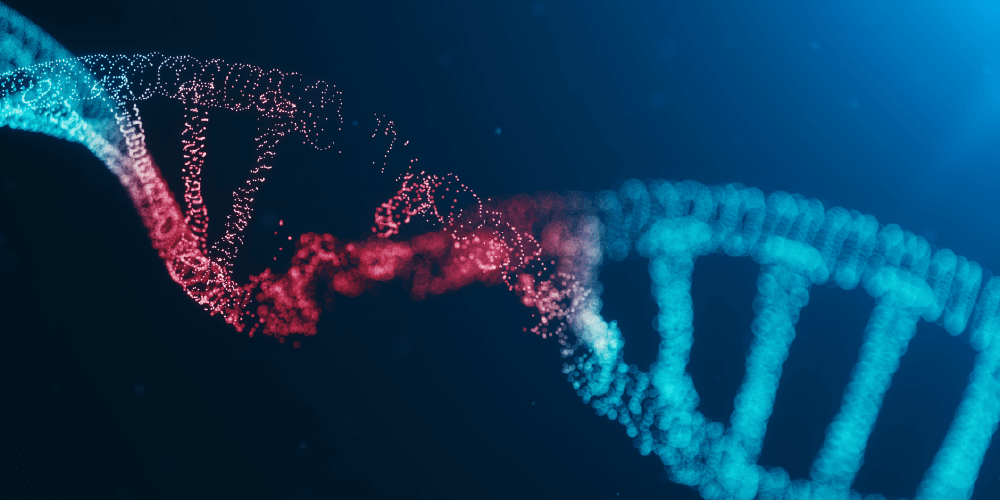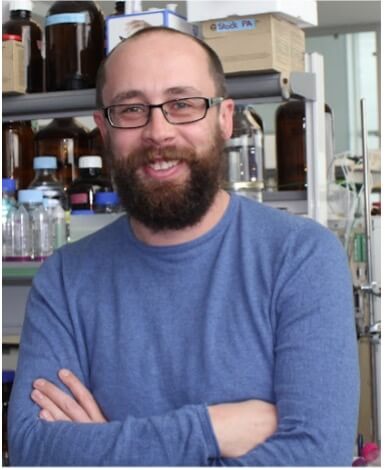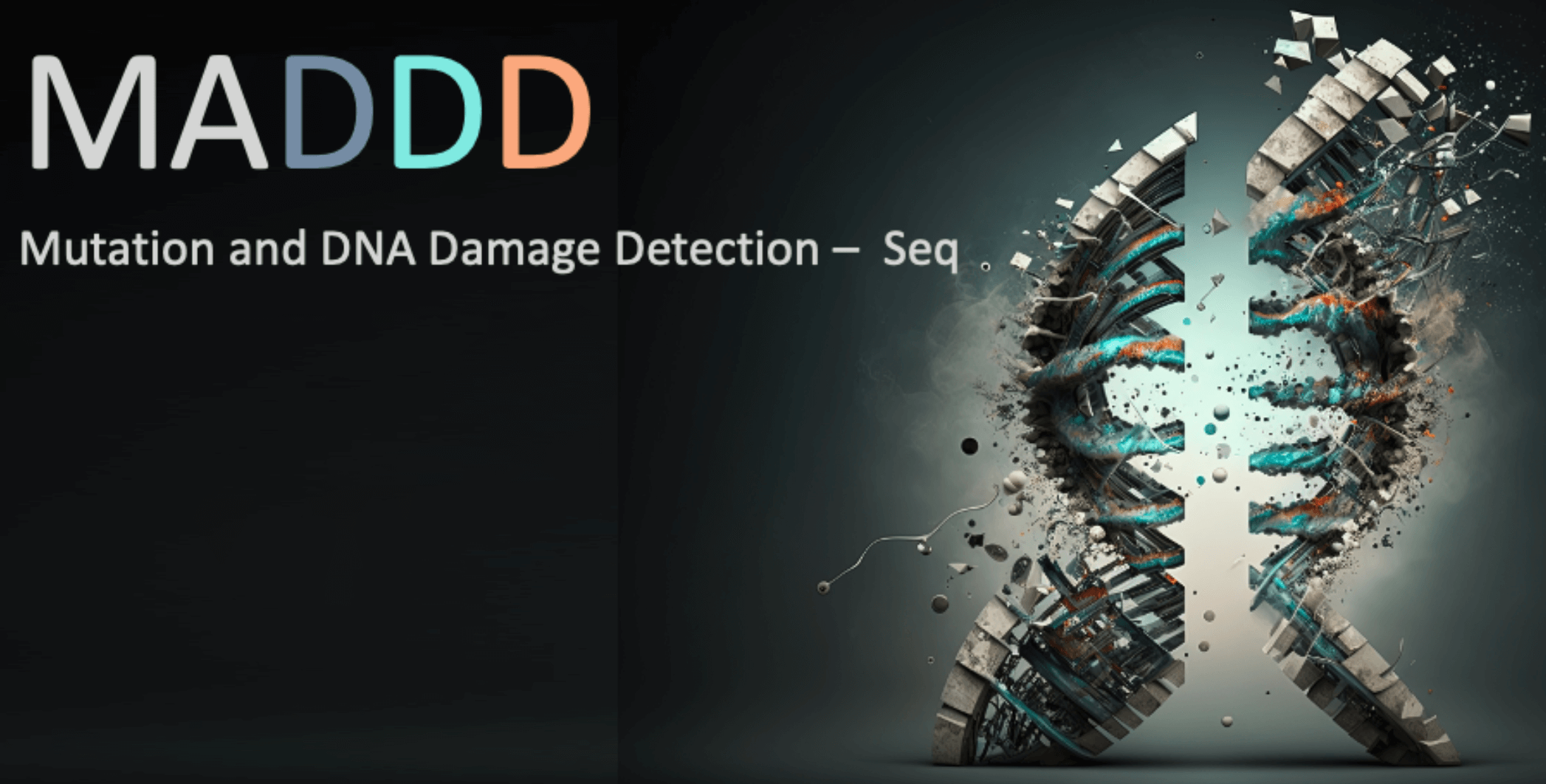<< Back to MOTIFvations Blog Home Page
HiDEF-Seq: Exploring How ssDNA Mutations Get Their Start

August 7, 2024
Table of Contents:
Introduction: Exploring How Mutations Get Their Start
The accumulation of mutations over a lifetime can prompt the development of various diseases, including cancer. While mutations start life as nucleotide mismatches or damage that affect one DNA strand (before a lack of repair or misrepair converts them into double-strand DNA mutations), we currently lack a means to fully explore these all-important single-strand initiating events. We do have the ability to profile DNA mutations at high fidelity; however, the need to amplify DNA before sequencing in said approaches can mask the accurate identification of the original single-strand initiating events (Koh et al. and Blokzijl et al.).
This problem prompted researchers guided by Gilad D. Evrony (New York University Grossman School of Medicine) to develop a single-molecule, long-read, direct sequencing-based method to reveal the single-strand origins of mutations without the need for prior amplification. Their recent Nature study now reports “hairpin duplex enhanced fidelity sequencing” or “HiDEF-seq” as an effective means of detecting base substitutions or cytosine deamination (a common type of DNA damage) in one or both DNA-strands at single-molecule fidelity (Liu et al.). Overall, HiDEF-seq has the potential to provide a real-time view of DNA lesions that reflects the equilibrium between DNA damage, repair, and replication and open new avenues for the study of DNA damage and mutational processes.
Hairpin Duplex Enhanced Fidelity Sequencing
Liu and Costa et al. designed HiDEF-seq with increasing the fidelity of single-molecule sequencing in mind; the team achieved this goal by increasing the number of independent sequencing passes per strand, eliminating the potential for in vitro artifacts during library preparation, and implementing a computational pipeline that avoided analytic artifacts. Following the sequencing of HiDEF-seq libraries on single-molecule long-read sequencers, the computational pipeline analyzes single-base substitutions and evaluates each strand separately to distinguish single- and double-strand DNA mutation events.
Initial testing of the ability of HiDEF-seq to detect double-strand DNA mutations revealed similar results to previous studies of de novo mutations (Halldorsson et al.) and parallel duplex sequencing of double-strand DNA mutations (Abascal et al.); furthermore, HiDEF-seq readily measured the double-strand DNA mutational signatures and linear increases in the levels of double-strand DNA mutation expected with age in human tissues (Hoang et al. and Abascal et al.). Importantly, when evaluating the ability of HiDEF-seq to detect single-strand DNA damage, the authors highlighted that the direct interrogation of unamplified single molecules afforded the highest fidelity for single-base changes of any DNA-sequencing method to date.
What can Hairpin Duplex Enhanced Fidelity Sequencing Do?
To confirm the single-strand DNA mismatch and damage detection abilities of HiDEF-seq, the authors profiled diverse tissue samples from individuals with inherited cancer predisposition syndromes, as they may display elevated levels of single-strand DNA damage. While HiDEF-seq measured the expected profile of double-strand DNA mismatches/damage and mutations based on previous studies (see the original paper for extensive references), this approach also detected higher levels of single-strand DNA mismatches and damage in cancer predisposition syndrome samples compared to healthy tissue. Going one step further, the authors highlighted the ability of HiDEF-seq to profile single-strand DNA mismatches and reveal the prevalence of asymmetries. Additionally, the correspondences encountered between single-strand signatures and known double-strand mutational signatures helped to resolve the identity of initiating lesions.
The team subsequently profiled hypermutating brain tumors to study the interaction between single-strand DNA mismatches introduced during replication and mismatch repair; interestingly, they discovered that tumors deficient in mismatch repair and replicative polymerase proofreading displayed distinct single-strand DNA mismatch patterns compared to samples deficient in polymerase proofreading only.
HiDEF-seq also helped to reveal DNA damage patterns of cytosine deamination that can result in double-strand DNA mutations (Shinmura et al.) with single-molecule fidelity. This success prompted the authors to define a single-strand DNA damage signature for APOBEC3A (recently distinguished as the vital contributor to cytosine deamination caused by APOBEC3 family proteins (Petljak et al.)) from primary human fibroblasts expressing human APOBEC3A. While this signature displayed a strong similarity to APOBEC3A’s double-strand DNA damage signature, the single-strand DNA signature contained additional examples of cytosine-to-thymine transitions.
Finally, the authors investigated mitochondrial double-strand and single-strand DNA mismatches and damage by HiDEF-seq to explore the mechanisms by which the mitochondrial genome mutates (which had remained somewhat unclear (Ju et al. and Kennedy et al.)). While mitochondrial double-strand DNA mutation rates measured by HiDEF-seq remained significantly higher than those from the nuclear genomes of matching tissues, single-strand DNA mutation rates in the mitochondria varied only slightly compared to those of nuclear genomes. These findings suggested that the mitochondrial genome mutates primarily during replication through DNA damage to the heavy strand and cytosine deamination of the light strand.
The Future of Hairpin Duplex Enhanced Fidelity Sequencing
Overall, HiDEF-seq represents an exciting tool that may help to fully describe mutation-initiating events on single-strand DNA at single-molecule resolution under physiological and pathological contexts in vivo and during the manipulation of cells in vitro. The authors foresee that their new advance will help generate a catalog of single-strand DNA mutation signatures to complement currently existing double-strand DNA catalogs; furthermore, said signatures can be related to each other to reveal in-depth knowledge regarding DNA damage, repair, and replication dynamics.
What is the take-home message from this study? – Defining single-strand changes to DNA with single-molecule fidelity by applying HiDEF-seq will undoubtedly advance our understanding of the origins of mutations.
For more on how hairpin duplex enhanced fidelity sequencing can reveal the single-strand beginnings of double-strand DNA mutations, see Nature, June 2024.
About the author

Stuart P. Atkinson, Ph.D.
Stuart was born and grew up in the idyllic town of Lanark (Scotland). He later studied biochemistry at the University of Strathclyde in Glasgow (Scotland) before gaining his Ph.D. in medical oncology; his thesis described the epigenetic regulation of the telomerase gene promoters in cancer cells. Following Post-doctoral stays in Newcastle (England) and Valencia (Spain) where his varied research aims included the exploration of epigenetics in embryonic and induced pluripotent stem cells, Stuart moved into project management and scientific writing/editing where his current interests include polymer chemistry, cancer research, regenerative medicine, and epigenetics. While not glued to his laptop, Stuart enjoys exploring the Spanish mountains and coastlines (and everywhere in between) and the food and drink that it provides!
Contact Stuart on Twitter with any questions
Related Articles
DNA Damage and Mutations Causing Problems? Don’t Get Even, Get MADDD-Seq!
December 7, 2023
A new preprint describes the principles and future applications of MADDD-Seq, a new technique which simultaneously detects DNA damage and mutations in a single assay. Check it out!
Read More
The Intertwined Lives of SIRT6, DNA Damage Repair, and Longevity
April 25, 2023
Sirtuins are a hot topic in slowing down aging. Here we present a roundup of research articles provides a recent history of the intertwined lives of SIRT6, DNA damage repair, epigenetics, and longevity!
Read More
<< Back to MOTIFvations Blog Home Page








